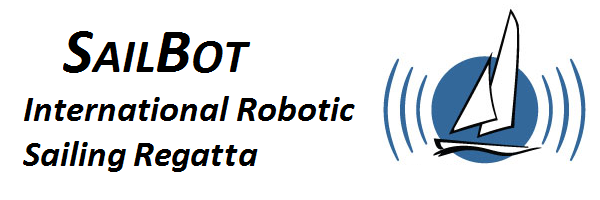The first event was a design presentation highlighting the vessel’s development. That was followed by on-the-water racing including: a precision navigation contest, match racing, a 5 km race and a station-keeping contest.
Five boats representing three schools; Queen’s University of Canada, the University of Wales at Aberystwyth and the United States Naval Academy, participated. Design summaries of the boats can be found here .
This year’s competition was marked by choppy conditions which tested the boats’ watertight integrity and ability to power through chop. When the chop was light, so was the wind! Currents of up to 0.5 knots made it important for the boats to have speed in light air. No team came through unchallenged as highlighted by the continued lack of finishers in the precision navigation contest!
Queen’s and USNA clearly improved significantly from last year with Queen’s modifying their boat with a deeper keel for added stability and padding of the hull to increase hull volume to offset the added keel weight. Their increased stability showed with greater boat speed in all wind speeds and the ability to sail in stronger winds. The USNA team built a new, lighter boat and increased the sail area of the old boat significantly. The added sail area helped in the lighter air but required the team to switch to smaller sails as the breeze built. The new boat was narrower and had a slightly lighter but longer bulb. The lower stability was apparent, but the lower hull resistance more than offset that liability and the new boat was quite quick in all conditions. USNA’s systems were significantly more advanced, but watertight integrity issues hurt their reliability.
Wales brought two very small boats which meant that they were much slower than the other boats, but their reliability was impressive. No issues surfaced, but they did have problems handling the light air, chop and current.
The SailBot Class is primarily aimed at undergraduate university teams but high school teams are also encouraged to enter. While the objective is for the students to build boats to their own designs, kit boats are welcome with the understanding that the team will receive reduced points for design development in the presentation event. The Open Class includes boats designed and built by graduate students, other academics or those in industry.
Some picture’s can be found on Rob Campbell’s flickr site.
Overall Scores:
United States Naval Academy (“Luce Canon”): 28.6 points
United States Naval Academy (“First Time”): 26 points
Queen’s University (“North Star”): 24.5 points
University of Wales, Aberystwyth (“MOOP 2”): 13.6 points
University of Wales, Aberystwyth (“MOOP1”): 12.9 points
Events:
Presentation Winner: USNA
Match Racing Winner: USNA (Luce Canon)
Station Keeping Winner: USNA (Luce Canon)
Long Distance Race Winner: USNA (First Time)
Navigation Contest: No finishers
Open Class Winner: University of Wales, Aberystwyth
